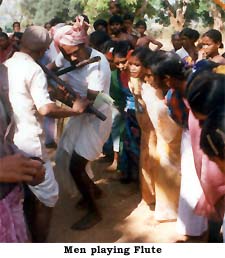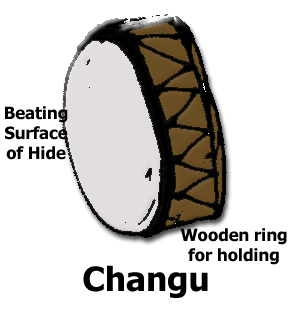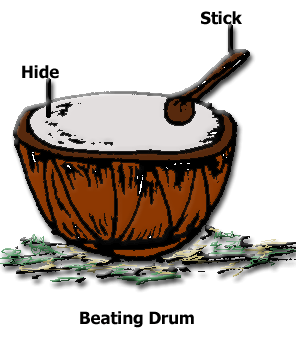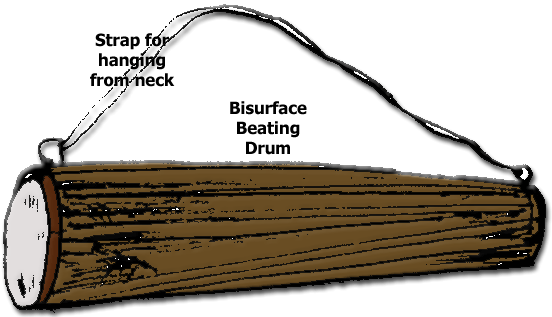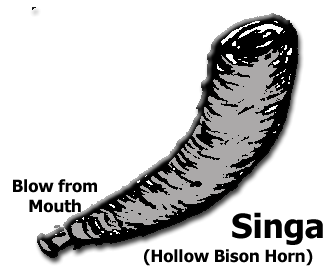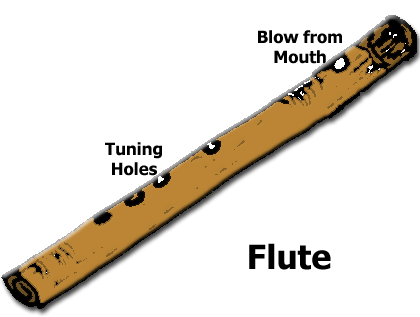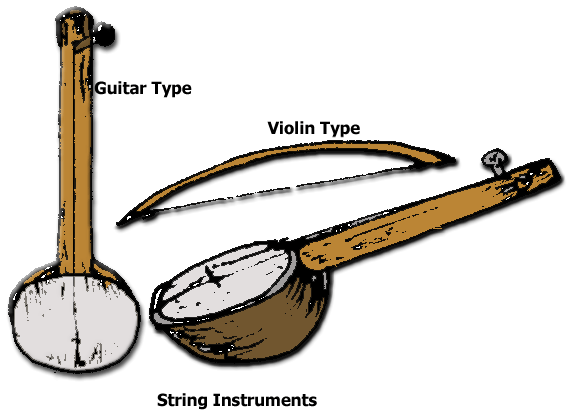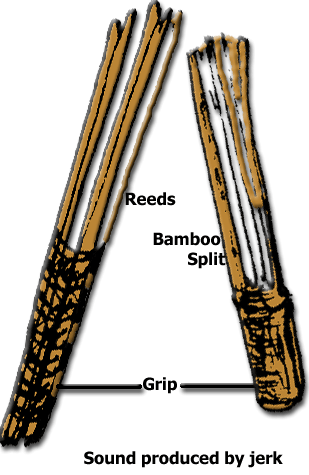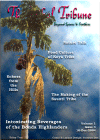Echoes from the Hills
|
The tribal communities (listed as 62) living in Orissa today, still maintain their identities in socio-cultural sphere. The ecological degradation of their homeland, inflicting economic hardship, food scarcity and ill health could not suppress their care free spirit. Still one can find, beating of drums, sonorous flute and vocal songs along with dance, in the tribal villages. The village belles when go in a group for forest collection, sing in chorus and burst into wild laughter to relieve themselves of anxieties and tiredness. Music and dances are part of their life from time immemorial.
Striking two hollow bamboo sticks also produce soft sound. Primitive people to design instruments for producing desirable note used all such objects of nature. Through centuries of culture with these equipment, the forest dwelling people could stabilize the notes and learn how to play the instruments to produce sonorous music synchronizing with vocal tunes and dance rhythms. In the process, the instruments have considerably been modified. The use of metal has changed many indigenous instruments. Non tribal contribution in this regard is important. Also specialist groups from other communities of the locality play musical instruments in tribal tunes. Instruments The tribal music has its own distinctive character. The tribal music can always be distinguished from the non-tribal folk music. The instruments the tribal people use are devised, by the specialists from amongst them, from locally available objects like animal hide, bamboo, wood, animal gut etc. The instruments they use fall into the categories viz., percussion instruments, blowing instruments, string instruments.
The male members of the tribal communities mostly play the instruments. The tunes played by them are traditionally learnt by the present players from their predecessors. So without any codified notation, the tune and the rhythm running in the community through generations. It is susceptible to external influence in each generation but the basic character remains unchanged particularly in the interior areas. The tribes of Orissa though physically represent the Austroloid type, linguistically belong to different families- Dravidian and Mundari. We do not have any clue as to whether the linguistic differentiation has caused any difference in musical tunes. But the scholars are pursuing their research to discern the influence of the primitive tunes in the modern music. Dr. Sunil K. Satpathy , a noted scholar , has tried to find the link between the musical notes of Juang tribe (Orissa) with Odishi music. |
Photographs : Men Playing Flute: Hrudaya Panigrahi
Illustrations : Supriya Ghoshmaulik
References :

